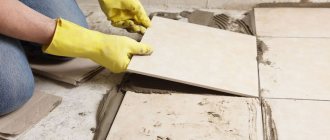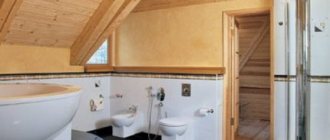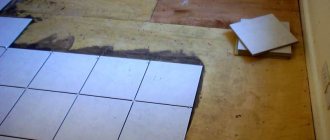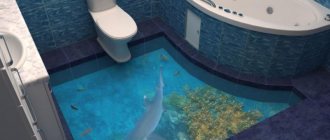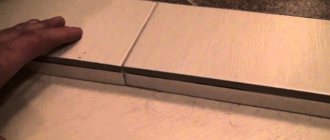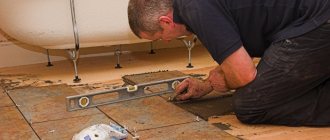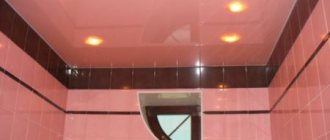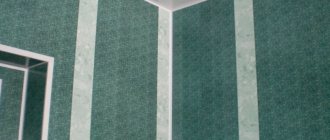Home / Design solutions / Ceiling design / Using cork floors in the bathroom
Cork as a flooring material is quickly gaining popularity. This is understandable - such coatings have a lot of advantages with a minimal set of disadvantages. However, some people want to use such a finish in places that are not the easiest to use. For example, install cork flooring in the bathroom. This is where some doubts may arise: is it possible to use this material in such a damp room and what the consequences might be. Let's try to find out.
Subtleties of cork making
The largest volume of cork is produced in Portugal from cork oak, where its plantings extend over 2.5 million hectares. The tree bark becomes suitable for removal only after 25 years of oak growth. In addition to this country, cork is produced in Algeria, Tunisia, Spain, France, Morocco and others.
Cork production is carried out without cutting down the tree: the bark is removed manually or using devices, and after 7 years the tree completely restores the integrity of the cover. The raw materials are crushed to obtain crumbs. Then it is pressed under pressure under high temperatures.
The evolution of cork flooring material
The unprotected surface of the cork coating is destroyed and deformed during intensive use. To improve the quality and application possibilities for flooring, manufacturers have created cork parquet from cork.
The structure of the new material is identical to wall panels, but has an increased density of granulate, which is pressed under high pressure. This coating is 4 mm thick and is protected by a three-layer coating of acrylic varnish. Parquet slabs measuring 300 × 300 mm consist of agglomerate, veneer, and 3 layers of varnish. This floor has a lot of advantages, but has not been used in rooms with high humidity before.
After the material was improved, they began to glue a transparent vinyl film onto the veneer surface, obtaining a multilayer material that consists of cork, veneer, a white PVC pad (this side is laid down), and a transparent film on the top layer. The material has a 15-year abrasion guarantee and is easy to cut.
Plate interlocking
Later, slabs with tongue-and-groove joints appeared; when installed, a floating floor is obtained. No adhesives are used. The covering can be easily disassembled and installed in another place. Varnish is applied to the locking surfaces. Therefore, after installation, the floating floor is ready for use.
Attention! Floors are installed using rolled cork: the thicker the substrate, the better the heat and sound insulation.
However, this type of flooring is not recommended for installation in a room with high humidity (bathroom). When water gets into the gap formed between the boards, this leads to the appearance of mold and mildew, causing diseases of an allergic nature.
Another building material deserves attention - black agglomerate, which is made from crushed, burnt, pressed cork. It is treated with steam (360 degrees) and then sharply cooled with water. The material is considered durable, has high levels of sound, heat, and vibration insulation.
Floor coverings are used to decorate the interior of an office, home, apartment, as a substrate for laminate flooring, and as insulation when installing ceilings. In addition, the coating began to be used for bathroom floors, but only when installed with adhesive compounds.
How to make the right choice
To choose the right option, you need to study the benefits of each drain closing device. To do this, you don't have to visit a plumbing store. Just look at the photos of all the plugs for the bathroom.
First, attention should be paid to the quality of the product material, carefully studying the product certificates. The product is selected based on its appearance, as well as depending on the manufacturing company.
If you have doubts about choosing an automatic or semi-automatic, you should stick to the guideline of what you like and what is suitable in a given specific situation. In order for the joy from the work of the structure to last, you should make a choice in favor of quality products.
Benefits of Using Cork for Bathroom Floors
A traffic jam in the bathroom has long ceased to be something supernatural. This natural coating has a lot of positive characteristics:
- bounces pleasantly when walked on;
- gives even heat;
- has an orthopedic effect;
- has high rates of heat and sound insulation;
- easy to install;
- not exposed to moisture (which is important for the bathroom).
Thanks to these properties, cork flooring is gaining popularity among consumers. The only thing worth knowing when choosing such a coating is that it has its own “character”, which is taken into account during installation and maintenance.
Flooring produced by different manufacturers differs in thickness and size. The choice depends on the purpose of using the material.
Types of cork material
The thickness of the plates ranges from 3-12 mm. They are covered with varnished veneer and a polymer layer. The size of the bathroom slab is 60 × 60 cm, 30 × 60 cm. The material can withstand high compression loads.
Attention! It is recommended to buy cork flooring from a trusted supplier, as there are cases of poor quality manufacturing: with pores where liquid penetrates.
In the bathroom, due to humidity, fluctuations, (changes) in temperature, the coating must be coated with water-based varnish - it increases water resistance. It is recommended to use solid cork veneer - its structure eliminates the formation of cracks where moisture can then enter.
